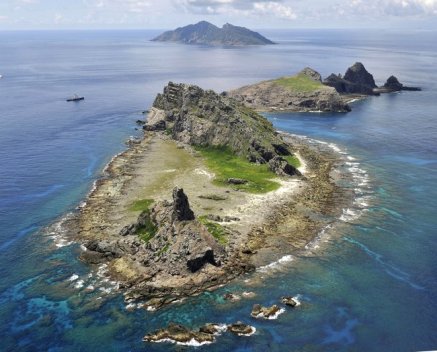By Sarthak Malhotra

As the time for South China Sea arbitration ruling comes closer, the foreign policy circles, including those of countries like the United States of America, are witnessing increasing discussions on the issue of China using a negative ruling as a pretext to declare an air defense identification zone (ADIZ) in the South China Sea.[1] Interestingly, the United States was the first country to set up an ADIZ in 1950 during the Cold War era.
I would refrain from discussing the South China Sea dispute at length since it has been discussed at length elsewhere. (See here and here for a historical background to the dispute) But I will instead focus on the jurisprudence surrounding ADIZs and China’s attempt to assert sovereignty over airspace by establishing an ADIZ over certain portions of East China Sea.
An Air Defence Identification Zone can be understood as an area in airspace over land or water which may not be over the sovereign territory of a State established to timely identify, monitor, control and react to aircraft entering this zone with potential air threats in which ready identification, location and control of all aircraft is required in the interest of national security.[2] Within the air zone, aircraft of other countries are required to submit reports about their nationalities, positions, flight plans so as to carry out identification, surveillance, and response in a timely way.[3]
The international law neither prohibits ADIZs nor explicitly addresses this issues. Many countries such as USA, Canada, Japan, South Korea, Taiwan and China have already established their own Air Defence Identification Zones.[4] Taking into account past experiences, an ADIZ may be established over territorial waters or land, but it may also be declared over high seas or extended into international airspace adjacent to national airspace.[5] However, the Chinese ADIZ is peculiar insofar as it requires submission of information by all commercial aircrafts flying through the ADIZ, regardless of the aircraft’s final destination.[6] This is different from the USA’s ADIZ, insofar as it does not require submission of information if the final destination is not the concerned state. This has been subject of severe criticism since aircrafts just transiting through the zone should not be subjected to these requirements.(See Article 87, UNCLOS and Freedoms of Air under Chicago Convention)
While each country offers a different justification for establishing an ADIZ, their rationale revolves around the issues of security. For instance, the United States bases its justification on the need to ensure national security, to control illicit drug activities, to minimize unnecessary intercept and search and rescue operations and to decrease the risk of mid-air collisions and other public hazards.[7]
In an ADIZ, the aircrafts are required to radio their identification to the country that has established the identification zone. This is so because the mens rea of a pilot navigating his aircraft cannot be ascertained under ordinary circumstances. Transmitting such information is in the pilot’s own interest as he can then also be assigned an exclusive ‘slot’ of airspace through which to fly so as to avoid mid-air collisions.[8] It also helps in advising weather changes and traffic conditions and “to permit the commencement of search and rescue operations with some degree of accuracy if an aircraft fails to report over a check point on schedule.” Such nonthreatening reconnaissance and surveillance flights have been said to represent the least intrusive form of information gathering, while respecting coastal state sovereignty since the alternative would be covert spying.[9]
Peter Dutton in his article published in AJIL concluded that “the international law framework that allows coastal states to declare and manage ADIZs without infringing on the free overflight of the EEZ by state aircraft promotes the ability of coastal states to protect their security by making an early determination of the nonhostile character of such flights while properly balancing the military interests of all states, and thus tends to promote stability and respect within the international community.” According to Dutton, “aircraft promotes the ability of coastal states to protect their security by making an early determination of the non hostile character of such flights while properly balancing the military interests of all states, and thus tends to promote stability and respect within the international community.”[10]
Analogies have also been drawn from maritime laws to discern the legal status of ADIZs.[11] Such arguments stem from the fact that if it is permissible for a state to exercise certain controls on the surface of the sea beyond its normal territorial jurisdiction, then it may also be permissible to exercise similar controls in the air so long as they are reasonable. Further, a general duty to reveal one’s identity exists in the realm of maritime law and a similar duty could be imposed in airspace which justifies the identification requirements imposed by ADIZ.[12] States establishing Maritime Identification Zones is also an important development which has influenced the legality of ADIZs.[13]
Influenced by these principles such as ‘self protection’, ‘self defence’ and ‘precautionary principle’, some authors have also argued in favour of a broad overaching principle that the requirements of ADIZ serve well the “defence of a sovereign State against attacks and accord with neo post modernist views that aviation should first serve the safety and security of a society and that any damage posed by the misuse of aviation should be effectively precluded.”[14]
Notwithstanding the legal ambigutiy surrounding ADIZs, it is clear from the abovemade observations that the generally prevailing view is that it is permissible for states to establish ADIZs for security and information gathering. The question that then arises is why the countries around the world are wary of China’s ADIZ in East China sea. The answer to this lies in the restrictive requirements of China’s ADIZ as noted in the beginning, geo-political conflicts of South China Sea and the underlying intent behind establishing the identification zone.
A survey of ADIZs established by Japan, South Korea and China demonstrates the intensity of the tension between these countries in and around China Sea. While South Korea’s ADIZ covers a a part of North Korea’s land area and Takeshima, a group of islands claimed by Japan, China’s ADIZ covers Ieo which is also claimed by South Korea. Following China’s announcement to establish ADIZ, South Korea also extended its ADIZ to cover Ieo islands.[15]
However, the biggest bone of contention is the controversy surrounding Senkaku Islands(known as Diaoyu Islands in China) over which both Japan and China assert sovereignty. In September, 2012, Japan purchased Senkaku Islands from a Japanese family, which triggered strong reactions from Chinese government. Even though Japan enjoys de facto control over the islands, China sent two maritime law enforcement ships to the islands.[16] This tension kept escalating, finally leading to China establishing an air identification zone over these islands. Many, understandably, believe that this is an attempt to assert sovereignty over these disputed islands. This, coupled with increased military confrontations in South China sea and ever increasing China’s presence over other islands (See China’s Secret Weapon on Disputed Island: Beer and Badminton) could serve as a blow to US strategy to prevent the emergence of any one dominant power in Asia and maintaining the status quo.[17]
____________________________________
